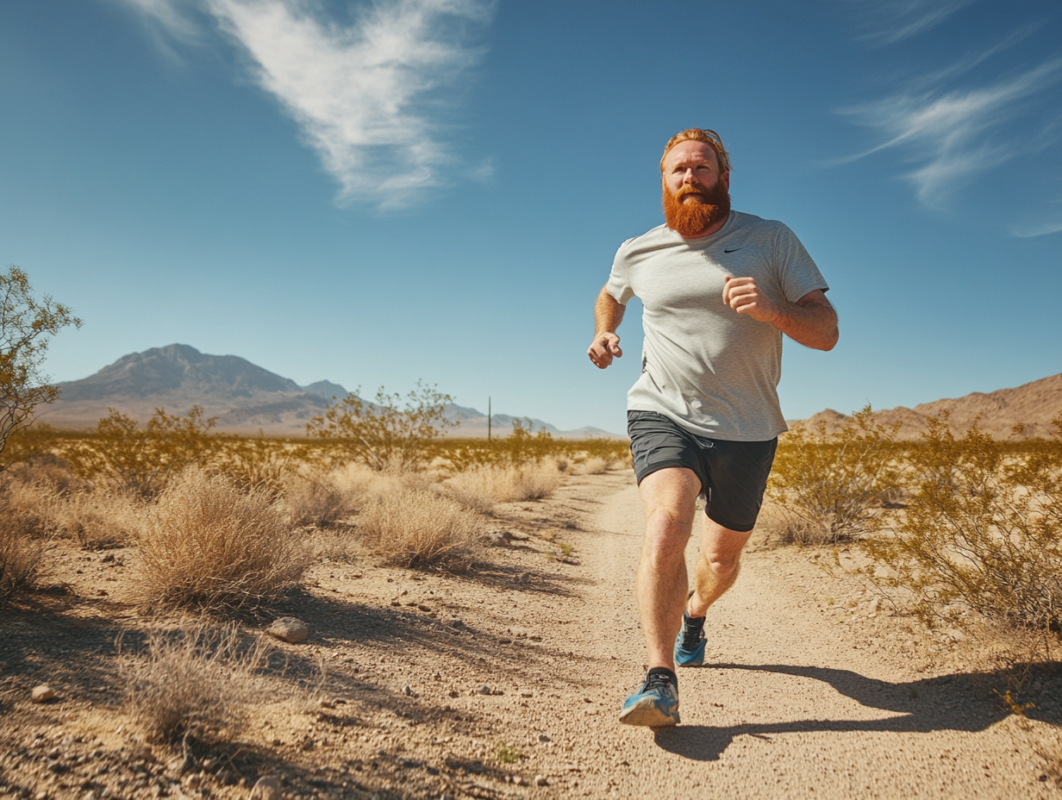blog
Run Faster with AI
Welcome to Orange Juice AI, where we use AI to improve our health, fitness, and lives. I’m Wes, and today I want to share how I’m using AI to set and achieve new fitness goals, specifically for running. This weekend, while camping in the Mojave National Preserve—one of my favorite spots—I had time to reflect on my journey and my ambitions for the upcoming training season. I’m aiming for new personal records (PRs) in both the 5K and marathon distances.
My goal is to run a sub-20-minute 5K, breaking my previous best of 21:30, and to complete a marathon in under four hours. My fastest marathon to date was four hours and two seconds, and I’m determined to beat that. I want to share how AI has been helping me on this journey.
A New Approach: Personalized Training with AI
I’ve recently started using a training philosophy inspired by the book Run Less, Run Faster. The concept is simple: three quality runs per week—a long run, a tempo run, and an interval session. Most runners stick to long runs, believing more mileage is the key to improvement, but Run Less, Run Faster emphasizes varied intensity, which has been a game changer for me.
However, I wasn’t just interested in following a typical training plan. I wanted something more adventurous and flexible. So, I turned to AI to create custom workouts that adapt to my evolving needs and goals without a rigid schedule. Instead of planning every run weeks in advance, I use AI to generate workouts day by day, based on my progress and how I’m feeling. This keeps my training fresh, exciting, and, most importantly, personalized.
Tracking Progress: Steps and Sleep
Five weeks ago, I committed to increasing my daily step count. I started walking more, aiming for 15,000 steps a day, inspired by a fitness coach who mentioned that his most successful clients—high-performing CEOs—all maintained this habit. Since then, my average daily steps have jumped from 7,500 to almost 10,000, with some days reaching 12,000 to 14,000.
Interestingly, I noticed improvements in my sleep too. Over the last month, my sleep quality indicators—tracked by my Apple Health—shifted from mostly red and orange (poor quality) to more green and blue (good quality). It turns out that increasing my activity levels not only improved my fitness but also helped me sleep better. Read more about this here.
Using AI for the 5K
Ahead of the Pomona 5K last Saturday, I decided to put AI to the test. I fed my recent 5K data into ChatGPT, which analyzed my heart rate, pace, and distance, and suggested a training plan for the week leading up to the race. It recommended an interval workout and a tempo run, with specific paces to target, followed by rest before race day. The result? My 5K time improved, with a pace of 9:14 per mile compared to my previous 9:45—a significant improvement, especially considering the hot weather conditions.
The Future: Custom Workouts with AI
Looking forward, I’m excited to continue using AI to customize my workouts. Instead of following a rigid schedule, I plan to input activities I enjoy—like jump rope, swimming, and biking—into an AI model and let it create varied workouts for me. This approach keeps my training interesting and prevents burnout, while also ensuring that I’m working towards my long-term goals.
My ultimate goal is to break the four-hour marathon barrier and run a sub-20-minute 5K. AI has given me the tools to approach training in a creative, adaptive way that suits my personality—adventurous, spontaneous, and always seeking variety. Here’s to being creative with our fitness journeys and using technology to push our limits.

